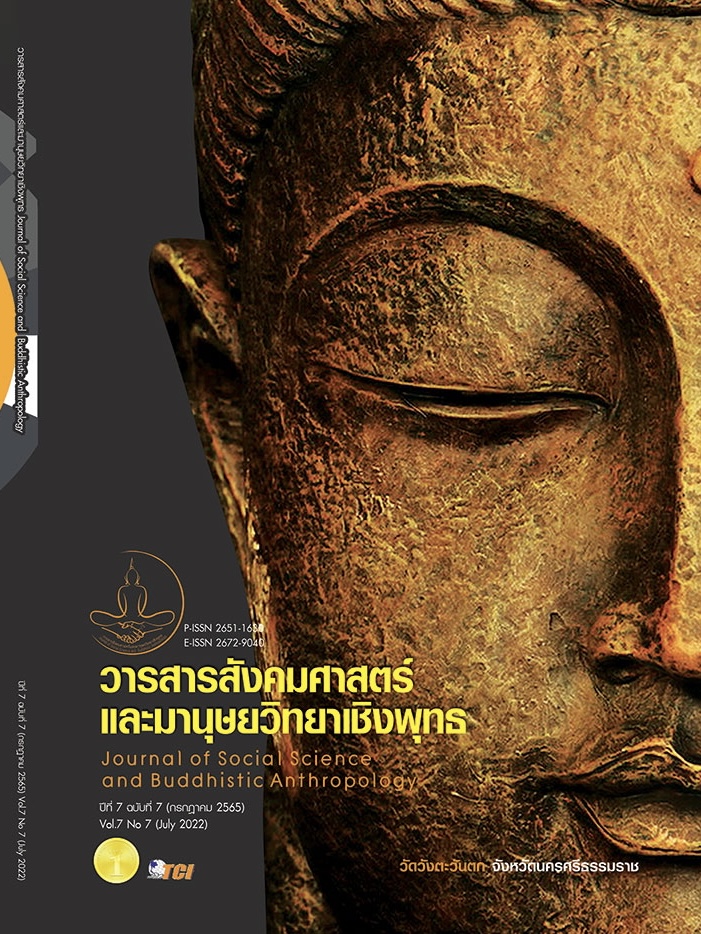THE CONCEPT OF DEMOCRACY IN THE TRIPITAKA
Keywords:
Concept, Democracy, TripitakaAbstract
The democratic concept in the Pali Canon was found that every precept or rule in Vinaya-pitaka, was enacted as a practical guideline for Buddhist monks. It was not, however, ordained by the Buddha himself. Each precept or rule was regulated by the process amid the Buddhist council after the causal affair was complained. Then, there was the Buddhist assembly to consider and investigate that affair, and the precept was regulated under the council’s agreement. Then, they willingly recognized and practiced that rule. In general, most religious deeds except an act, called Apalokana-kamma in Pali, were performed by a certain group of Buddhist monks. In addition, the democratic concept in the Buddhist Suttanta-pitaka was criticized as follows: 1) Liberty of Thinking – Kalama villagers were granted eleven principles of belief in Kalama-sutta (either called Kesaputta-sutta). 2) Equity – In Buddhism, there were eight miracles of the Doctrine and Discipline (Dhamma and Vinaya in Pali), the Buddha’s teachings (so-called Buddhism), in comparison to the eight miracles of the ocean. 3) Brotherhood – There was fraternity or companionship among Buddhist monks. 4) Exercise of Sovereignty – The supremacy of righteousness (Dhammadhipateyya in Pali), different from self-dependence (Attadhipateyya) and supremacy of the public opinion (Lokadhipateyya), was praised by the Buddha, saying ‘Wherever was without great men was not an assembly.’ Nevertheless, there was an evidence of democracy that the council of Buddhist monks were allowed to perform all ecclesiastical rites, which were based on the Doctrine and Discipline as the supreme constitution in Buddhism, the principle of equity, the principle of the middle way, and the democracy.
References
เสฐียรพงษ์ วรรณปก. (2543). คำบรรยายพระไตรปิฎก. กรุงเทพมหานคร: ธรรมสภา.
จิรโชค (บรรพต) วีระสัย และคณะ. (2538). รัฐศาสตร์ทั่วไป. กรุงเทพมหานคร: โรงพิมพ์มหาวิทยาลัยรามคำแหง.
ธีรภัทร์ เสรีรังสรรค์. (2562). รัฐศาสตร์กับความมั่นคงของการเมืองไทย. วารสารมนุษยศาสตร์และสังคมศาสตร์ มหาวิทยาลัยราชภัฏสุรินทร์, 21(2), 347-364.
ประยงค์ สุวรรณบุบผา. (2541). รัฐปรัชญา แนวคิดตะวันออก-ตะวันตก. กรุงเทพมหานคร: สำนักพิมพ์โอเดียนสโตร์.
พระธรรมปิฎก (ป.อ. ปยุตฺโต). (2546). พจนานุกรมพุทธศาสตร์ ฉบับประมวลธรรม. กรุงเทพมหานคร: โรงพิมพ์มหาจุฬาลงกรณราชวิทยาลัย.
พระสุธีวรญาณ (ณรงค์ จิตฺตโสภโณ). (2541). พุทธศาสตร์ปริทรรศน์. กรุงเทพมหานคร: โรงพิมพ์มหาจุฬาลงกรณราชวิทยาลัย.
มหาวิทยาลัยมหาจุฬาลงกรณราชวิทยาลัย. (2542). พระไตรปิฎกภาษาไทย ฉบับมหาจุฬาลงกรณราชวิทยาลัย. กรุงเทพมหานคร: โรงพิมพ์มหาจุฬาลงกรณราชวิทยาลัย.
วัชรินทร์ ปัญญาประเสริฐ. (2538). พระพุทธศาสนากับการพัฒนาประชาธิปไตยในประเทศไทย. ใน วิทยานิพนธ์ศิลปศาสตรมหาบัณฑิต สาขาวิชารัฐศาสตร์. มหาวิทยาลัยรามคำแหง.
สุขพัฒน์ อนนท์จารย์. (2543). รัฐศาสตร์ตามแนวพุทธศาสตร์. ขอนแก่น: สำนักพิมพ์อนนท์จารย์.
สุพจน์ บุญวิเศษ. (2549). หลักรัฐศาสตร์. กรุงเทพมหานคร: ห้างหุ้นส่วนจำกัด เอ็ม.ที.เพรส.
Downloads
Published
How to Cite
Issue
Section
License
Copyright (c) 2022 Journal of Social Science and Buddhistic Anthropology

This work is licensed under a Creative Commons Attribution-NonCommercial-NoDerivatives 4.0 International License.








